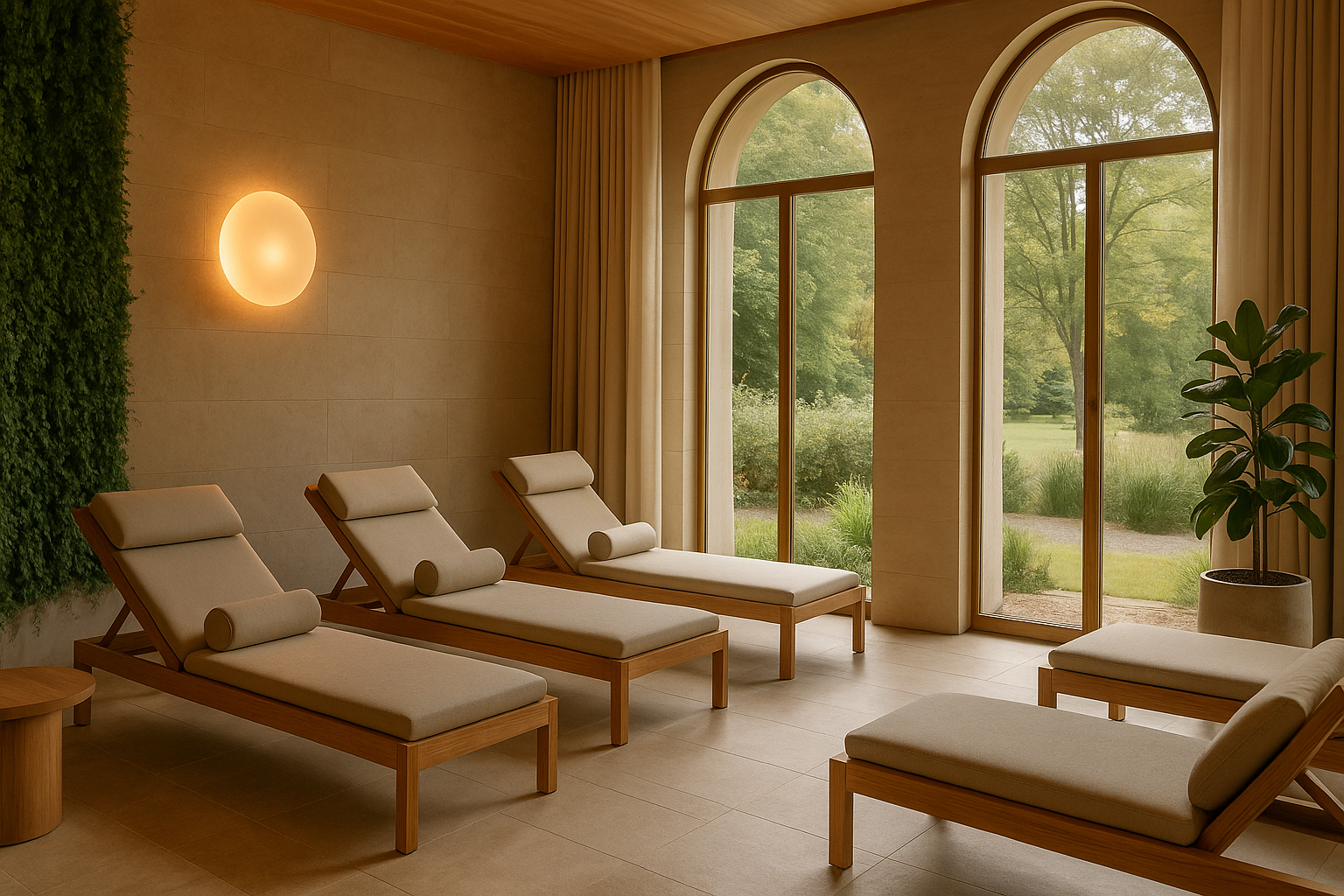Over the past decade, the global hospitality industry has witnessed a powerful transformation. No longer just places to rest, hotels are being reimagined as immersive spaces for rejuvenation, restoration, and reconnection—with oneself and the environment. Welcome to the world of wellness architecture, where design doesn’t just serve function—it fosters healing.
In a post-pandemic era, guests are not simply searching for comfort or convenience; they’re looking for experiences that nourish their mental, physical, and emotional well-being. This shift has sparked a new design philosophy, blending biophilic elements, sensory experiences, and holistic principles into architectural blueprints. Wellness architecture isn’t just about spas and saunas anymore—it’s about how a building makes you feel, how it breathes, and how it interacts with the rhythms of life.
What is wellness architecture?
Wellness architecture is the intentional design of spaces that enhance human health and well-being. In the context of hospitality, it means crafting environments that offer more than luxury—they offer healing. These are spaces that prioritize natural light, clean air, acoustic balance, and emotional comfort, while also considering social connectivity and environmental responsibility.
From eco-conscious boutique hotels in the Alps to beachside sanctuaries in Bali, wellness-focused hotels are becoming a dominant trend—and for good reason. They answer a deepening global desire for slower, more meaningful travel.
Why Wellness Matters in Hospitality Design
According to the Global Wellness Institute, the wellness tourism market is expected to surpass $1 trillion by 2027, with travellers increasingly seeking hotels that cater to personal health and inner peace. This isn’t just a luxury market trend—it reflects a widespread cultural shift.
Designers and hoteliers now recognize that built environments have a profound impact on our mood, sleep, immunity, and productivity. When wellness is embedded into the very foundation of a hotel—its materials, orientation, and spatial flow—it creates a deeper and more lasting connection with guests.
Key Elements of Wellness-Centric Hotel Design
So how do architects and designers create hotels that truly heal? The answer lies in combining science, sustainability, and soul. Here are some essential strategies:
- Biophilic Design
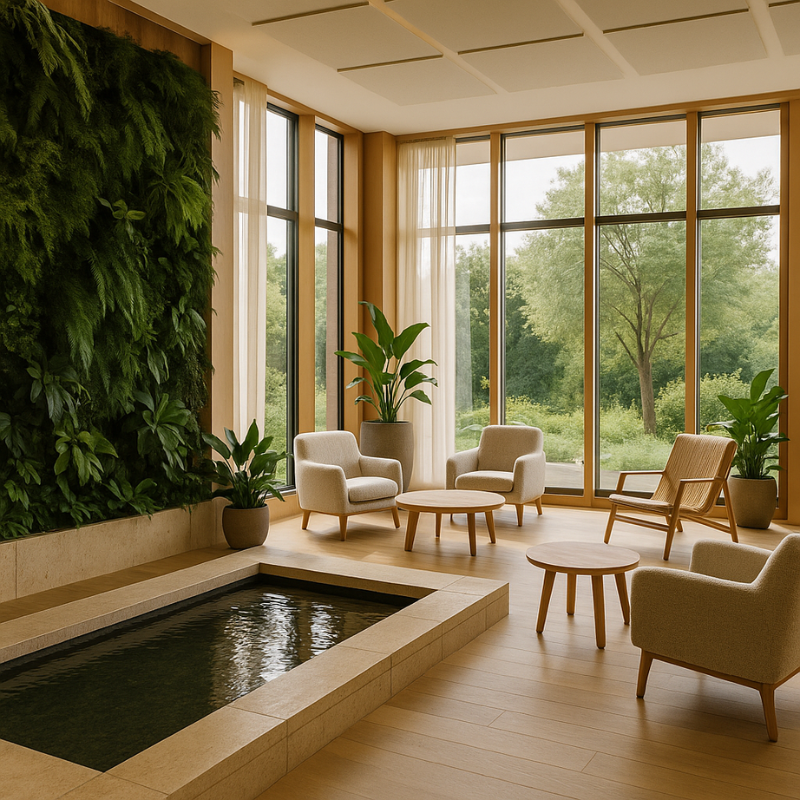
Bringing the outdoors in is more than aesthetic—it’s therapeutic. Biophilic design taps into our innate connection to nature through:
- Living green walls and indoor gardens
- Large, operable windows for daylight and fresh air
- Water features like fountains or reflecting pools
- Use of organic materials like stone, wood, clay, and linen
Even simple gestures—like aligning a room with sunrise views or planting native flora—can ground guests in a sense of calm and presence.
- Circadian Lighting
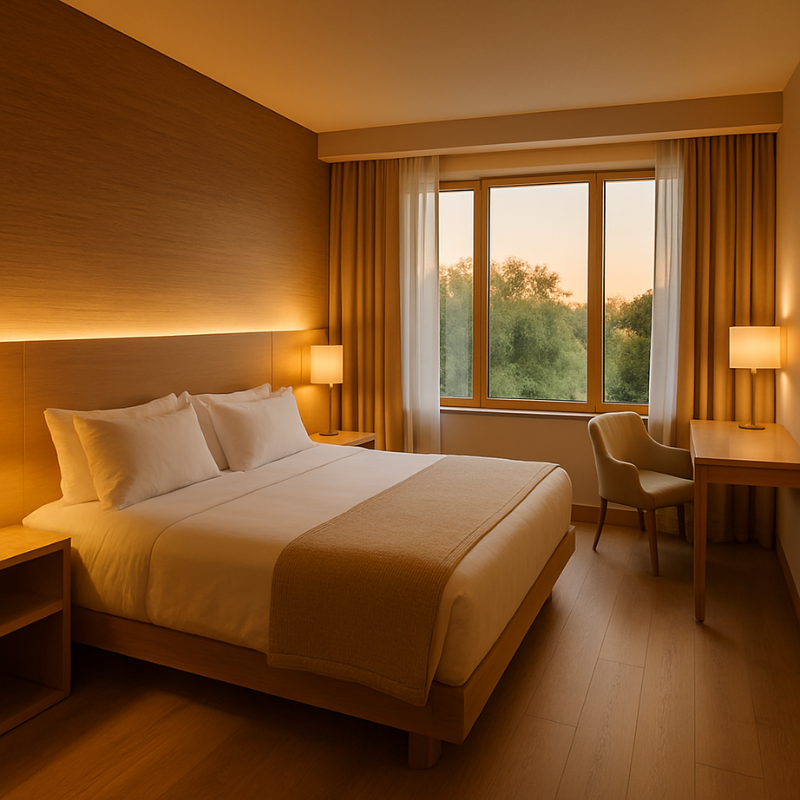
Lighting affects everything from sleep quality to hormone regulation. Wellness hotels are increasingly integrating circadian lighting systems that shift in tone and intensity throughout the day:
- Warm, dim lights in the evening support melatonin production.
- Bright, cool-toned lights in the morning energize and reset biological clocks.
- Skylights and diffused daylight reduce reliance on artificial lighting.
When lighting design supports the body’s natural rhythms, stress decreases and vitality increases.
- Air and Acoustic Quality
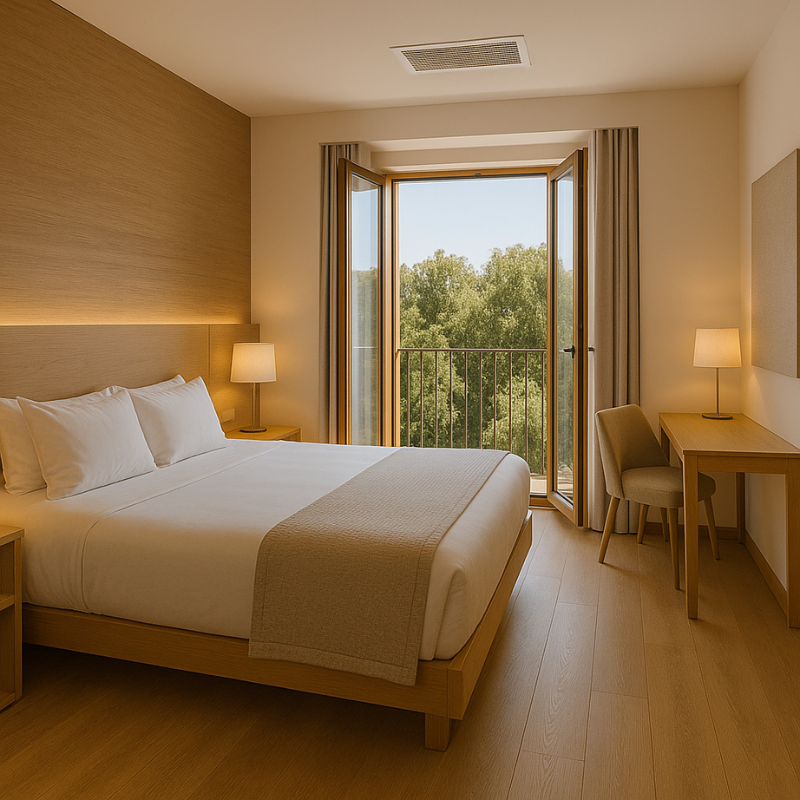
True wellness design extends to what we breathe and hear. Ventilation systems with HEPA filters, toxin-free materials, and cross-ventilated layouts ensure air stays clean and energizing. Meanwhile, acoustic strategies—like cork flooring, sound-absorbing panels, or water features—help block disruptive noise and create soothing soundscapes.
A quiet room with fresh air might just be the new definition of luxury.
- Mindful Material Selection
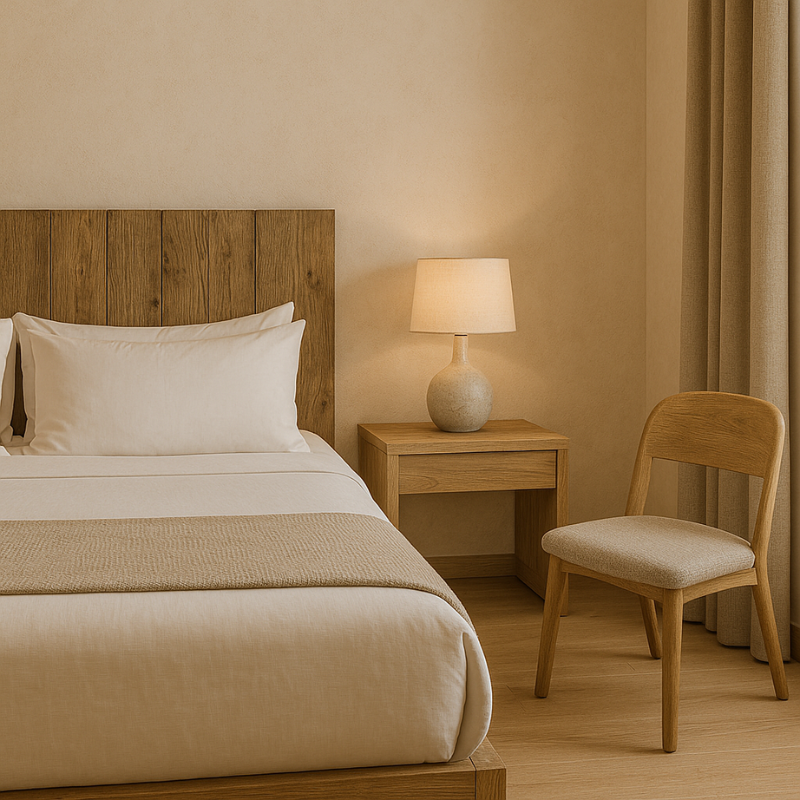
Wellness-focused hotels lean into non-toxic, sustainable, and sensory-friendly materials. Natural fibers underfoot, textured wall surfaces, and earthy finishes not only create tactile interest—they also avoid harmful chemicals and elevate sensory experience.
Materials also tell a story. Reclaimed wood, artisanal ceramics, or indigenous textiles deepen cultural authenticity and create an emotional bond with place.
- Spaces for Stillness and Connection
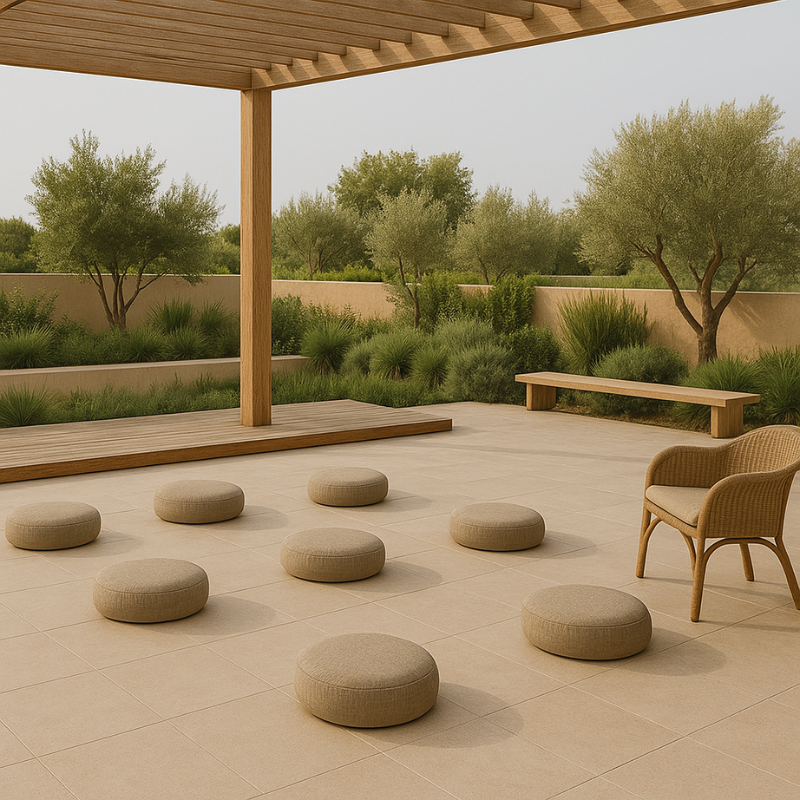
Wellness architecture recognizes the power of space—not just physical space, but emotional space. Hotels are introducing areas that invite silence, slowness, and introspection:
- Meditation gardens and labyrinths
- Wellness rooftops with yoga decks
- Floating pods or nap rooms
- Co-working lounges with biophilic design and ambient soundscapes
By carving out zones for solitude and community alike, these hotels foster mental clarity and social well-being.
Real-World Examples of Healing Hotels
Several wellness-centric hotels around the world are setting the benchmark for what’s possible:
- Euphoria Retreat, Greece: A holistic design inspired by Byzantine architecture, with immersive wellness spaces carved into the mountain.
- Six Senses Douro Valley, Portugal: A restored 19th-century estate with solar energy, living roofs, and forest therapy walks.
- Amangiri, Utah: Nestled in the desert, blending modern minimalism with the raw power of the landscape—pure architectural serenity.
These are not just places to stay—they are places to transform.
Designing for the Future of Wellness Travel
As wellness becomes a lifestyle rather than a luxury, architects and designers are being called to redefine hospitality. This means not only designing buildings but also designing experiences—multi-sensory, context-aware, and emotionally intelligent.
It’s about creating architecture that responds to the human need for rest, reflection, and renewal.
Final Thoughts
Wellness architecture is no longer a niche—it’s a movement. As more travelers prioritize well-being, the hotels that thrive will be those designed not just for style or efficiency, but for healing and harmony.
Whether you’re an architect, hotelier, or conscious traveller, now is the time to think beyond the bed and bath. Let’s build spaces that breathe with us, lift us, and restore us.
At Ideas for Architecture, we explore the cutting edge of design that prioritizes people and planet.
Want more stories on wellness, sustainability, and future-forward hospitality? Stay connected and subscribe to our newsletter for the latest insights in architectural innovation.





